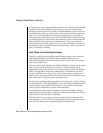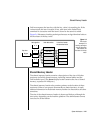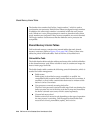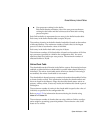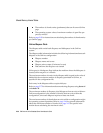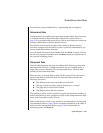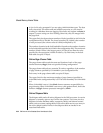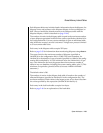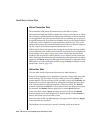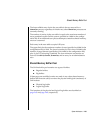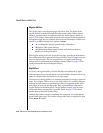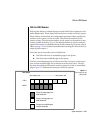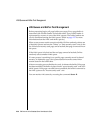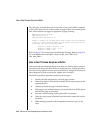
System Architecture 2-53
Shared-Memory Internal Tables
Each tblspace table entry includes header information about the tblspace, the
tblspace name, and pointers to the tblspace tblspace in the root dbspace on
disk. (Do not confuse the shared-memory active tblspace table with the
tblspace tblspace, which is described on page 2-104.)
The number of entries in the tblspace table is equal to the maximum number
of open tblspaces permitted in this OnLine system, specified as TBLSPACES in
the configuration file. If a user process attempts to open an additional table
after all entries are used, an error is returned. A single user process is limited
to 32 concurrent table locks.
Each entry in the tblspace table occupies 232 bytes.
Refer to page 3-85 for information about monitoring tblspaces using tbstat -t.
The upper limit for the maximum number of tblspaces (specified as
TBLSPACES in the configuration file) is 32,000. The lower boundary for
TBLSPACES is the number of user processes (specified as USERS in the config-
uration file) multiplied by 10. The minimum value for TBLSPACES is 10 per
user. This minimum also must be greater than the maximum number of
tables in any one database, including the system catalog tables, plus 2. (This
minimum is required to permit OnLine to execute a DROP DATABASE
statement.)
The default value is 200.
The number of entries in the tblspace hash table is based on the number of
allocated tblspaces (specified as TBLSPACES in the configuration file). The
maximum number of hash values is the largest power of two that is less than
the value specified by the expression (TBLSPACES divided by 4).
Each entry in the lock hash table occupies four bytes.
Refer to page 2-46 for an explanation of the hash table.




